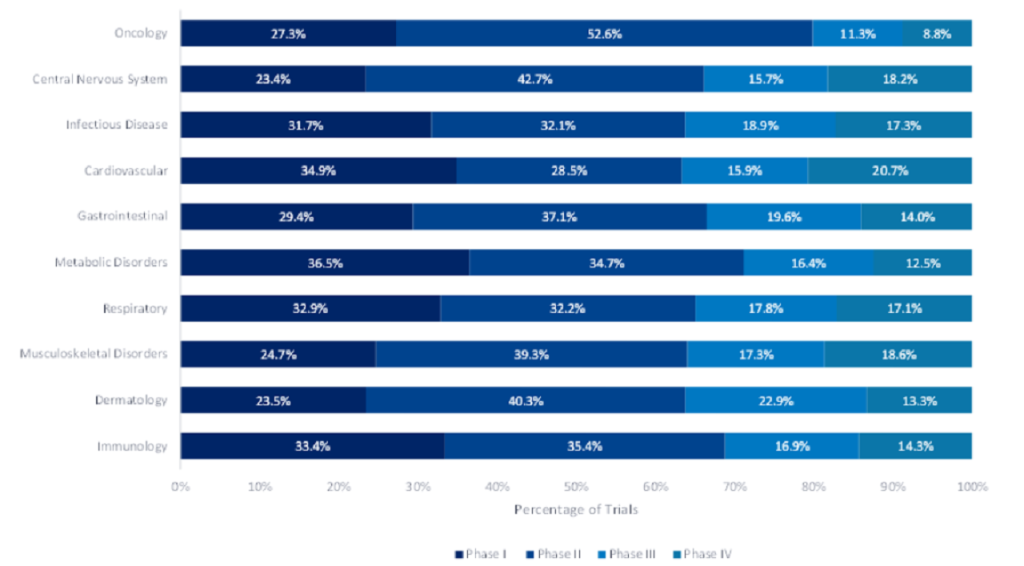Strategic Partnerships have been an ongoing area of dispute amongst the pharma community. Seen by many larger pharmas as a cost-saving option, which consistently leads to maintained timelines, they can be viewed as a sensible, long-term solution for two companies with matching cultures. However, other pharma companies view the rigidity, as well as reduced expenditure control, as major potential obstacles, which may not deliver the best services for newer trials.
A model with improved efficiency
Theoretically, there are a number of recognised advantages to the strategic partnership model. From a budgeting perspective, strategic partnerships can be hugely cost saving for sponsor companies in the long term, thanks to reduced trial start-up timelines. If your SOPs remain similar across your trials, this can reduce the time used for kick-off meetings, meaning the trial could begin earlier. Prior to this, there is also no time wasted searching for vendors, and less time spent outlining escalation patterns as these will most likely just need updating. However, there are structures that need to be put in place to ensure vendors and trials are started and regulated throughout. For many, the creation of a steering committee is commonly advised to help continually review the progress of the partnership model. So, once the partnership has been formed, the next part to consider is the costing. Due to the commitment to one vendor, general expenditure within trials is less controllable – so do the benefits outweigh the costs?
Reviewing costs & contracting
It is commonly believed that the costs of starting strategic partnerships means they are not advisable for smaller pharmas. However, even for larger pharmas, they do not always prove as long-lasting as initially thought. A few years ago a major pharma player took a bold decision to move away from a functional outsourcing model to a study-by-study vendor model. Considering the costs involved in forming strategic partnerships, the costs in time and resources of dissembling it are also great. The pharma company must not only find the resources elsewhere, they must also seek out a completely new vendor in the market. All this adds to timelines, and pushes back the progress of their studies. This indicates that a matching company culture must be present from the start, or there could be costly break-ups down the line.
Another headache surrounding strategic partnerships is the contract management. After all how can one contract realistically cover a host of varying clinical trials? Many sponsors agree that when setting up a trial, it is impossible to anticipate all factors. In turn, it can be harder to put a cohesive contract in place, with all costs considered for a strategic partnership. In this regard, many sponsors agree the key to controlled spending resides in keeping a good relationship between the sponsor and CRO. Communication is never more important, as it will ensure common agreement and understanding on overall trial budgets, and new areas of expenditure.
Maintaining a strong relationship is essential in ensuring sponsor companies understand where money is being spent. When a good open relationship is formed, many companies actually find it can be more cost effective than if you weren’t in a partnership. However, the main factor to consider regarding both the costs and contracting is you can’t control the actual expenditure, as this is largely at the behest of your chosen vendor. For example, if a vendor needs more funding to get more patients or is having to open up different sites and lengthen timelines, these must be accepted by the sponsor. It may mean more headaches for pharma and contract teams as the books must still be balanced. Either way, these elements are definitely factors to consider before a partnership is set up.
See Also:
Rigidity in strategic partnerships
The largest downside of a strategic partnership is its overall rigidity. Having just one vendor means the partnership can often prove rigid. As you have entered into an agreement with one vendor, it can be harder to deal with external variables if they do not seem the best suited to deal with them. In this case, you have to trust your procurement team, as they can often help you establish the best possible cost saving strategies for each situation. However, there is often more flexibility in partnerships than is often considered. There are many variations within strategic partnerships which can be altered. For example, many large pharma companies at the moment are changing from a one CRO partnership to a strategic partnership with two CROs, which allows a broader number of services to be made available. Although requiring additional planning, and greater personnel management, the number of parties in partnerships can be altered as long as they can be fully integrated. However, a large area to consider before entering into a strategic partnership is the fact it can take alot of money and time to put these partnerships in place before you begin saving money in the long run. Therefore, sponsor companies should consider that adding CROs to the partnership is not a quick and cheap process. Essentially, the chosen partners at the start are those you are committing to as service providers, so thorough research on their true capabilities is a necessity.
How well do you really know your competitors?
Access the most comprehensive Company Profiles on the market, powered by GlobalData. Save hours of research. Gain competitive edge.

Thank you!
Your download email will arrive shortly
Not ready to buy yet? Download a free sample
We are confident about the unique quality of our Company Profiles. However, we want you to make the most beneficial decision for your business, so we offer a free sample that you can download by submitting the below form
By GlobalDataConclusions
In order to keep a strategic partnership in place, there are certain factors that must be considered. It is vital to have an oversight committee in place, and within this you must have people that deal with different functions who can ensure the partners are continually hitting key milestones. Matching company cultures is also important when choosing your partners, but so is the need for constant communication between parties. Ultimately, thorough research on what services the vendor can offer you should be the deciding factor when a sponsor company is evaluating whether a commitment to one vendor is worthwhile in the long run.






